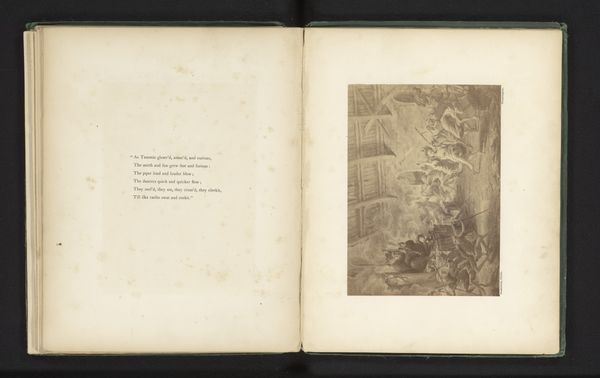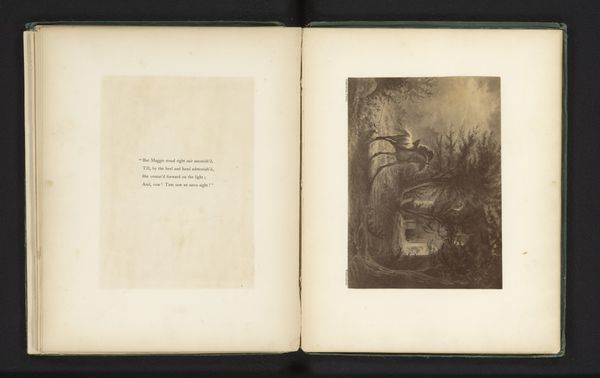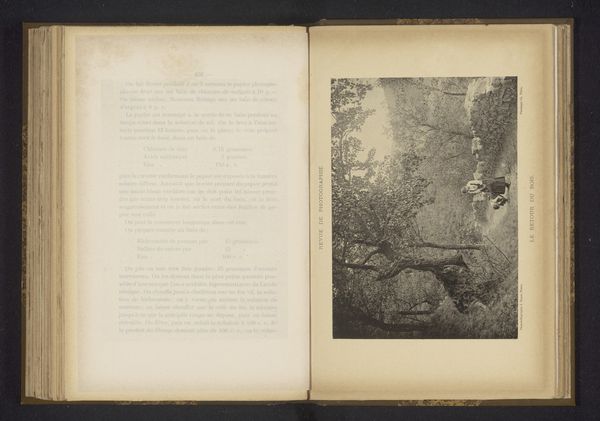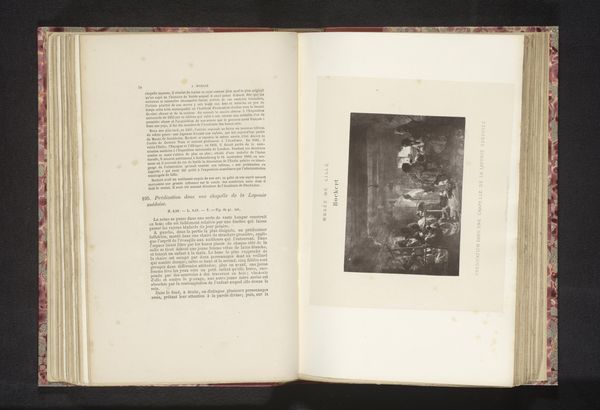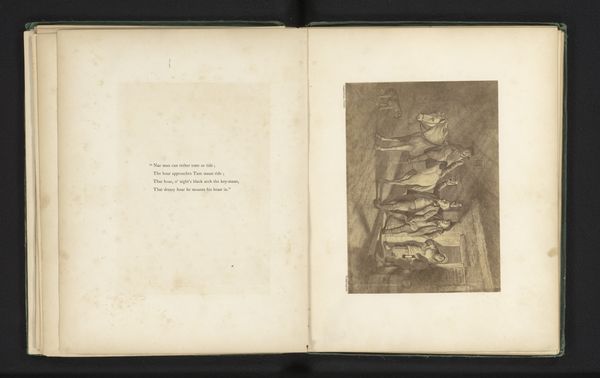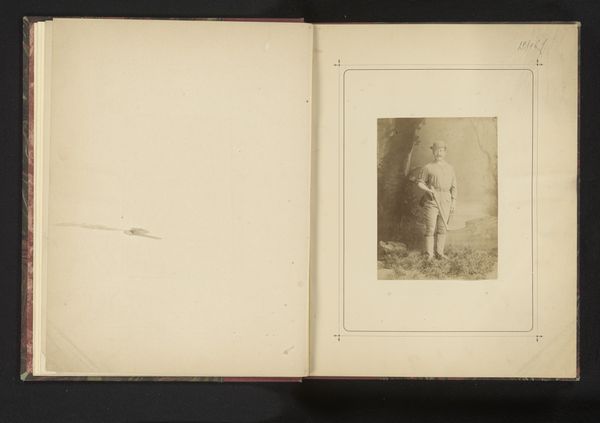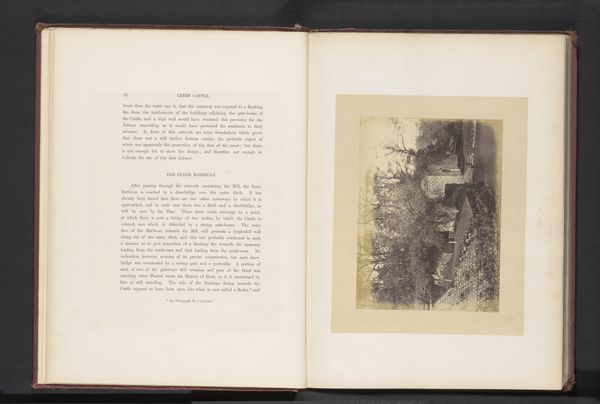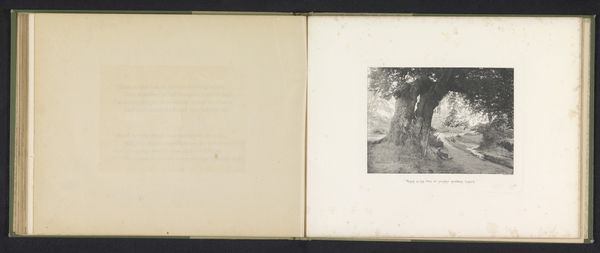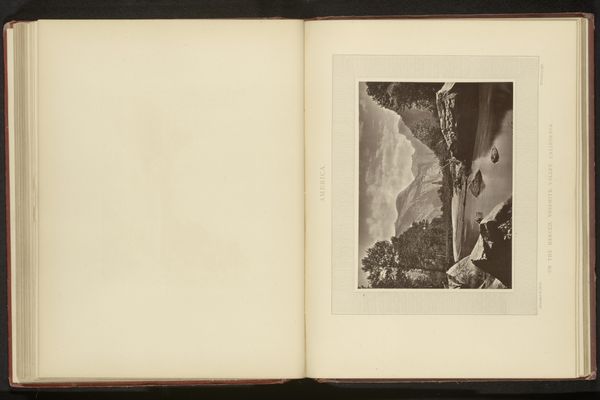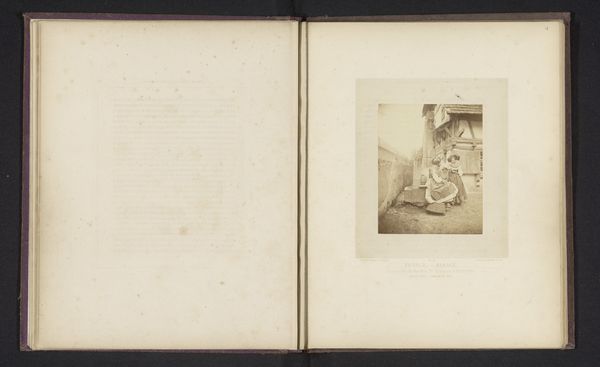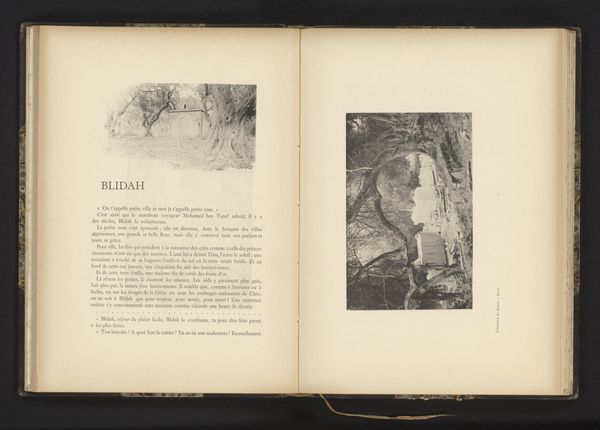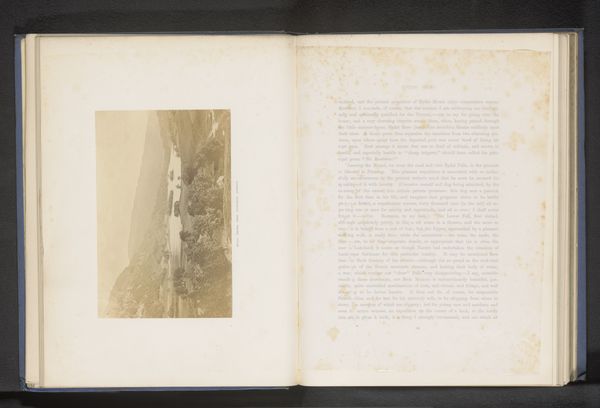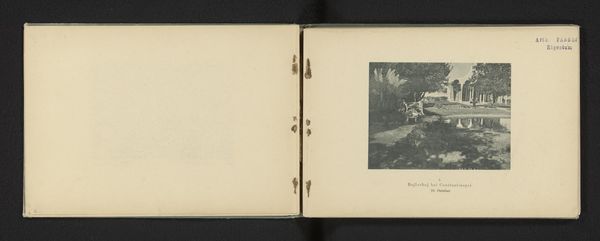
drawing, print, etching, photography
#
portrait
#
drawing
#
narrative-art
# print
#
etching
#
figuration
#
photography
Dimensions: height 124 mm, width 171 mm
Copyright: Rijks Museum: Open Domain
Curator: Alexander Gardner’s "Fotoreproductie van een tekening, voorstellende Tam te paard," likely made before 1868, arrests me in ways I didn't quite expect. It’s… well, it’s haunting. There's an odd juxtaposition of motion and stillness. What’s your take on it? Editor: Instantly, I am struck by how the narrative implications extend beyond what’s represented. It appears this etching reproduces a drawing and yet uses photography; that in itself seems rife with meanings regarding truth, reproduction, and representation. The figure and the horse exist as signs beyond themselves. Curator: A fascinating point. For me, it brings up notions of storytelling and translation—what's gained and lost between the drawing, the photographic reproduction, and our viewing experience. There's an undeniable theatricality here, almost a stage presence caught in mid-gallop amidst stormy weather and jagged landscape. Editor: Stormy weather indeed—this makes me consider how nineteenth-century artwork served a crucial role in formulating concepts of the ‘frontier,’ especially concerning ideas of white conquest, colonialism, and manifest destiny in America. Curator: I see it. I see the threads of what you mean, woven with this rugged frontier tale, right down to the very sinews of this valiant, rather smallish, steed. Though its diminutive presence might speak against the common notion of total conquest, I think, adding to the sense of dream and drama... Editor: Precisely! And who is Tam, really? This work speaks to the complex performance of masculinity too, one perpetually framed by conflict, heroism, and survival—a performance deeply enmeshed with land appropriation and national identity-making. Curator: These kinds of drawings allowed people a shared cultural and even emotional landscape. Today we think differently, thanks to activists like you who highlight undercurrents of colonization! Editor: It is interesting, indeed, to look closely at this visual record to unpack its colonial gazes and gendered assumptions, prompting more insightful conversation. Curator: So true! Perhaps these turbulent visual encounters offer a space for re-evaluating historical narratives and finding alternative modes of representation—or, for imagining entirely new stories.
Comments
No comments
Be the first to comment and join the conversation on the ultimate creative platform.

